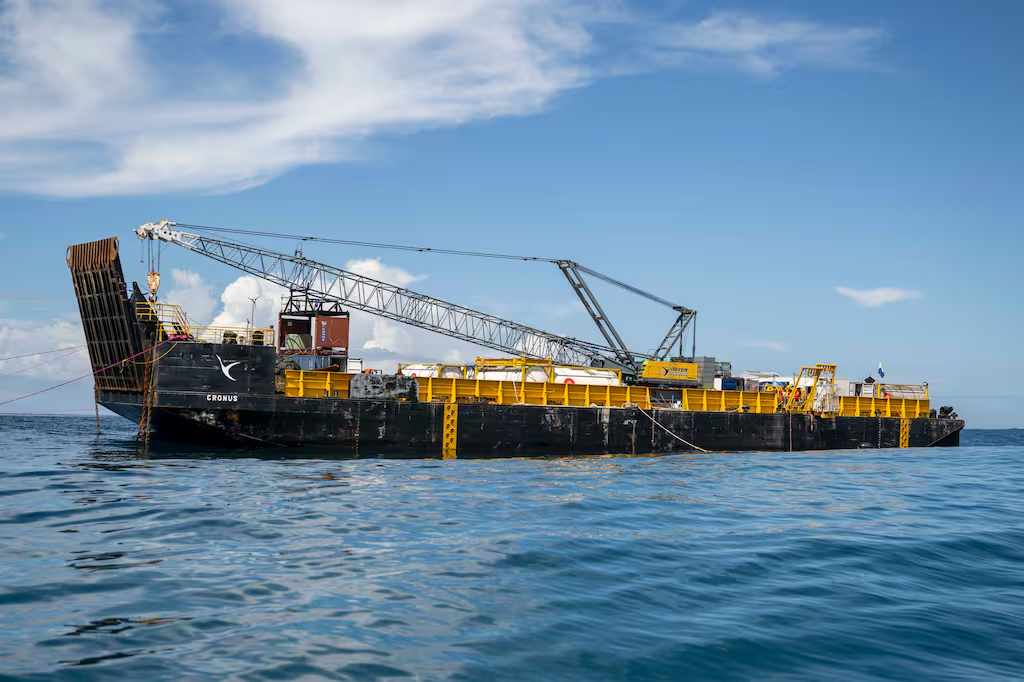HMNZS Aotearoa departs on resupply mission to Antarctica
17 January, 2025

HMNZS Aotearoa, the Royal New Zealand Navy’s maritime sustainment vessel, is sailing to Antarctica to deliver food, supplies and engineering equipment for New Zealand and United States bases on the ice.
Commander Rob Welford, Aotearoa’s Commanding Officer, says he and his ship’s company are excited to be travelling to a part of the world few people get to experience.
He has served in the Royal Navy for 28 years and the Royal New Zealand Navy since 2014. He took command of Aotearoa in 2023 and last year he completed a four-month deployment through the Indo Pacific.
Icebergs and Southern Ocean weather would be a new experience, he said.
“From a Commanding Officer’s perspective, this is a really different kind of marinership, and a very rewarding one. This is all about the weather. You’re aware of the Roaring Forties, the Furious Fifties and the Screaming Sixties – well, they are not called that for no good reason. Down there, the weather can be relentless.”

Aotearoa has departed from Devonport Naval Base this morning and will stop in Geelong, Australia before continuing to Antarctica.
HMNZS Aotearoa has departed Devonport Naval Base for Antarctica to deliver food, supplies and engineering equipment for New Zealand and United States bases
HMNZS Aotearoa has departed Devonport Naval Base for Antarctica to deliver food, supplies and engineering equipment for New Zealand and United States bases
HMNZS Aotearoa has departed Devonport Naval Base for Antarctica to deliver food, supplies and engineering equipment for New Zealand and United States basesScroll to previous imageScroll to next image
Aotearoa’s missions are part of the New Zealand Defence Force’s (NZDF) support to Antarctica New Zealand programmes, which have been sustained since the 1970s using RNZAF C-130 Hercules and more latterly Boeing 757s, and in support of the Antarctica Joint Logistics Pool, made up of New Zealand, the United States of America, Italy and the Republic of Korea.
Aotearoa’ s first supply mission to Antarctica, which can only take place in summer, was in 2022, the first Royal New Zealand Navy resupply mission to Antarctica in more than 50 years.
As well as its resupply mission, Aotearoa is supporting scientific research.
Three scientists are tasked with running experiments for the Antarctic Science Platform (ASP) and Defence Science and Technology (DST).
DST research and programme lead Sally Garrett says their focus is safer navigation by measuring marine weather and sea ice.
“The use of Aotearoa greatly increases the extent of where science can be undertaken, including the deployment of robotic ocean sensors in the eastern regions of the Ross Sea.”
“These science activities complement the ASP voyage in NIWA’s research vessel RV Tangaroa, which is in Antarctic waters at the same time.”
Maritime Component Commander Commodore Shane Arndell says that supporting the Antarctica Joint Logistics Pool is an important role for the NZDF.
“This is the sort of mission that Aotearoa was designed for, so we can ensure that New Zealand is a valuable partner in the Ross Sea region. We are very pleased to play our part through the Joint Logistics Pool and support Antarctica New Zealand and the scientific programmes being undertaken on this deployment.
“It will be a challenging deployment, but one that the crew will remember for a life time.”
Commissioned in 2020, Aotearoa is a Polar Class 6 vessel, meaning it has a higher grade of steel plating to withstand cold temperatures, and thicker steel to protect its hull from ice. It has heating and other systems fitted to operate in temperatures down to minus 25 degrees Celsius. It is the largest ship our Navy has ever operated.










